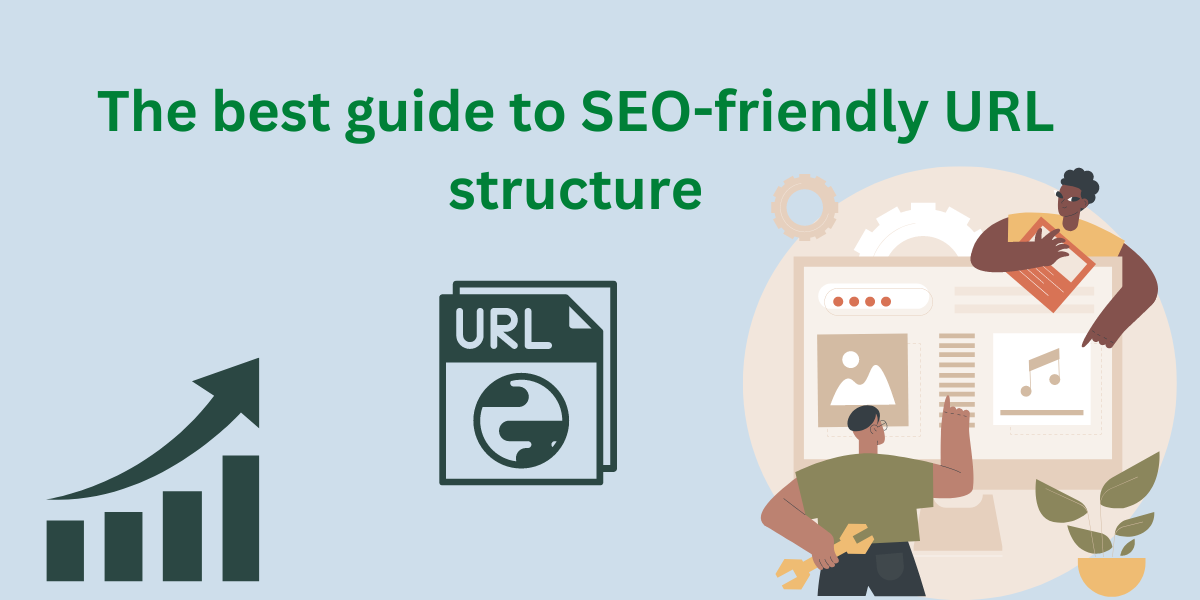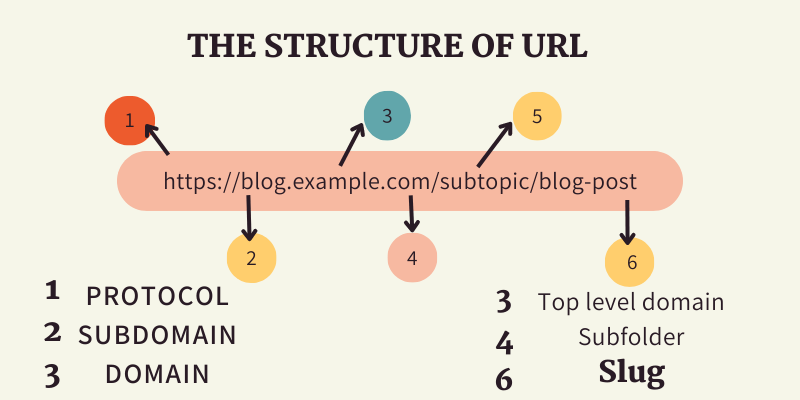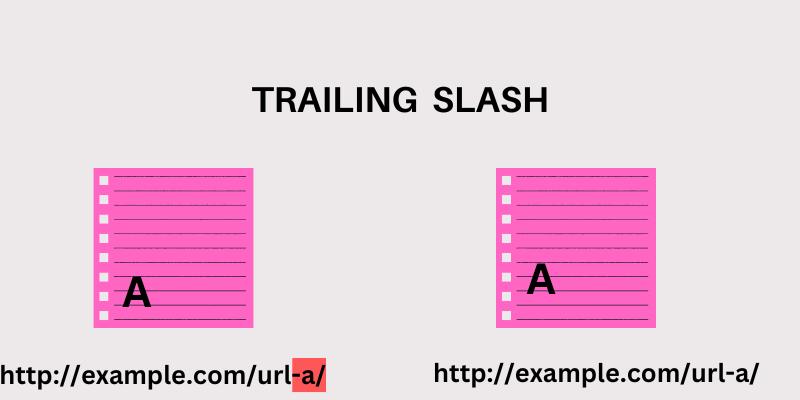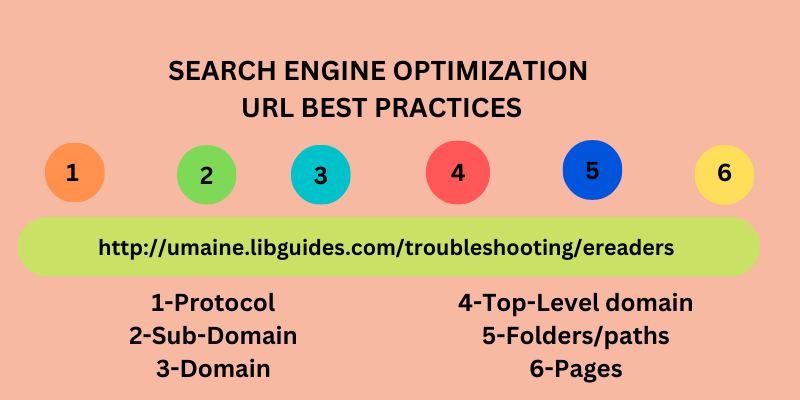- Home /
- Academy /
- Technical SEO /
- URL Optimization: The Beginner's Guide to SEO-Friendly URLs
URL Optimization: The Beginner's Guide to SEO-Friendly URLs

Google's SEO beginning guide stresses the value of adopting short, approachable URLs, but how do you do that? The good news is that generating URLs for SEO isn't particularly difficult.
It is typically "good enough" for SEO if you can sum up your page in a few words and hyphenate the gaps.
But you'd probably rather avoid making an unproven guess. Following are some best practices for the rest of the URL as well as a straightforward approach for building optimal URL slugs.
But first, let's make sure we comprehend the structure of URLs. URLs that are SEO-friendly function well for both visitors and search engines. In general, URLs tell visitors and search engines where a document or page is located. A successful SEO campaign depends on well-designed URLs. Be sure to adhere to these best practices while using URLs.
What is an URL?
Uniform Resource Locator, or URL, is a term. It alludes to the internet's digital address for web pages. The servers and browsers involved utilize URLs to reach the particular page you chose when you open a web browser and view a website.
Other types of resources include files and media links that can be viewed online. Although there are a lot of technicalities involved with URLs, the structure is what you need to focus on for SEO.
What is the structure of a URL?
For search engine optimization, making sure your URL structure is appropriate for consumers in Google search is crucial. Everyone is aware that a URL must be in lowercase, contain hyphens, and undoubtedly include a domain name. But there are a few things webmasters need to know if they want to boost their game in digital marketing.
The following describes a URL format that is SEO-friendly:
- Protocol
- Subdomain
- Domain
- Slug
- Permalink
Here is an example of our plumbing citation list page's optimized URL structure with annotations:

The permalink and, to a lesser extent, the slug, are the areas you will be optimizing the most in terms of SEO.
Creating a Custom URL Structure
It's crucial to bear the following in mind when creating your URL structure. Casing Because URLs are case-sensitive, https://example.com/url-a/ and https://example.com/url-A/ are interpreted differently. Use only lowercase characters in URLs.
It's simple to make a typo when building links, which results in both versions of the URL being indexed. Avoiding this redundant content is advised. A URL in uppercase letters should 301-redirect to the canonical version of the URL whenever one in lowercase letters is requested. Implement a canonical URL to the canonical version if that isn't achievable.
To slash, or not to slash?

Decide whether or not each URL will terminate with a /. If you decide to utilise it, make sure that any URLs that terminate without a / are 301-redirected to the equivalent URL that does. Also the opposite.
SEO-friendly URL best practices
It's best if a website's URL structure is straightforward. Consider structuring your material such that URLs are created logically and in a way that is easiest for people to understand.

That is logical, but how do you carry it out? These are the components of SEO-friendly URLs that we have listed:
- Descriptive
- Readable,
- Brief,
- Reliable
Readable and descriptive URLs
Just by looking at the URL, a potential visitor should be able to determine what is on a page. A Google search result with a clear and informative URL will get far more clicks from users. In light of this, consider the following:
- Keywords in URLs: Make sure the URL contains one or two essential words. This clarifies the content of the URL for both visitors and search engines.
- Don't over-optimize by stuffing URLs with keywords: Stuffing URLs with keywords affects readability and is an obvious symptom of over-optimization. It doesn't add anything and can potentially make your SEO less effective.
- Stopwords should not be used in URLs: Stopwords should not be used in URLs. They merely lengthen and complicate URLs without adding any benefit.
Keep URLs brief
Keep URLs brief since both visitors and search engines prefer them. Utilize the least number of directories you can, ideally just one. But the purpose of short URLs is not to do this. Your aim is to create logical and readable URLs.
Consistently use URLs
To create the URLs on your website, you must settle on one favored method and stay with it.
Imagine working hard, sweating, and crying, and then finally seeing your organic traffic increase. You don't want to change directories or pages in URLs at this point because that necessitates setting up redirects to send users and search engines to new URLs. So, when selecting URLs, plan ahead.
Hyphenate words to separate them: Hyphenate words in URLs (-). Although modern search engines now accept underscores (_) as word separators, hyphens are still preferred by your readers' eyes. By deleting dates, URLs are future-proofed: Pick a generic URL that you can use repeatedly. It's likely that other websites will connect to that page, and you want to take advantage of the authority that those links pass on each year. So to maintain the balance!
Conclusion
You may more effectively optimize the URLs on your site for both search engines and web crawlers by using these best and terrible practises. Your URLs will generate more organic traffic and higher ranks if they concentrate on ways to enhance the user experience.
In addition to considering how your URLs can support your site's structure, think about keywords. Although it can take some experience and some time to plan out URLs in SEO tools like Screaming Frog, the more you do it, the more naturally it will come to you.
Start using PagesMeter now!
With PagesMeter, you have everything you need for better website speed monitoring, all in one place.
- Free Sign Up
- No credit card required

The hreflang attribute is used to specify which language your content is in and which geographical region it is intended for.

A search engine spider has a "allowance" for how many pages on your site it can and wants to crawl. This is referred to as a "crawl budget."

The URL redirect also known as URL forwarding is a technique to give more than one URL address to a page or as a whole website or an application.
Uncover your website’s SEO potential.
PagesMeter is a single tool that offers everything you need to monitor your website's speed.